Electrostatics - Coulomb’s Law: Superposition principle | 12th Physics : Electrostatics
Chapter: 12th Physics : Electrostatics
Coulomb’s Law: Superposition principle
Superposition principle
Coulomb’s law explains the interaction between two point charges. If there are more than two charges, the force on one charge due to all the other charges needs to be calculated. Coulomb’s law alone does not give the answer. The superposition principle explains the interaction between multiple charges.
According to this superposition principle, the total force acting on a given charge is equal to the vector sum of forces exerted on it by all the other charges.
Consider a system of n charges, namely q1, q2, q3 ….qn. The force on q1 exerted by the charge q2

Here ^r21 is the unit vector from q2 to q1 along the line joining the two charges and r21 is the distance between the charges q1 and q2. The electrostatic force between two charges is not affected by the presence of other charges in the neighbourhood.
The force on q1 exerted by the charge q3 is

By continuing this, the total force acting on the charge q1 due to all other charges is given by
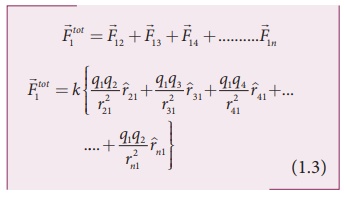
EXAMPLE 1.5
Consider four equal charges q1,q2, q3 and q4 = q = +1μC located at four different points on a circle of radius 1m, as shown in the figure. Calculate the total force acting on the charge q1 due to all the other charges.
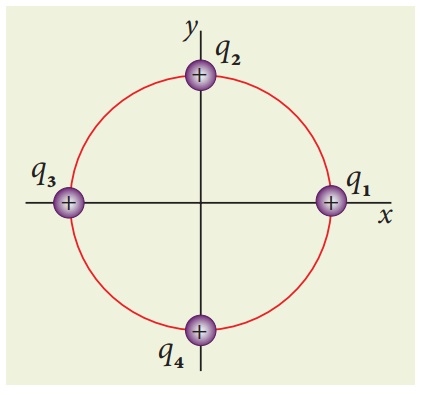
Solution
According to the superposition principle, the total electrostatic force on charge q1 is the vector sum of the forces due to the other charges,

The following diagram shows the direction of each force on the charge q1.

The charges q2 and q4 are equi-distant from q1. As a result the strengths (magnitude) of the forces ![]() and
and ![]() are the same even though their directions are different. Therefore the vectors representing these two forces are drawn with equal lengths. But the charge q3 is located farther compared to q2 and q4. Since the strength of the electrostatic force decreases as distance increases, the strength of the force
are the same even though their directions are different. Therefore the vectors representing these two forces are drawn with equal lengths. But the charge q3 is located farther compared to q2 and q4. Since the strength of the electrostatic force decreases as distance increases, the strength of the force ![]() is lesser than that of forces
is lesser than that of forces ![]() and
and ![]() . Hence the vector representing the force
. Hence the vector representing the force ![]() is drawn with smaller length compared to that for forces
is drawn with smaller length compared to that for forces ![]() and
and ![]() .
.
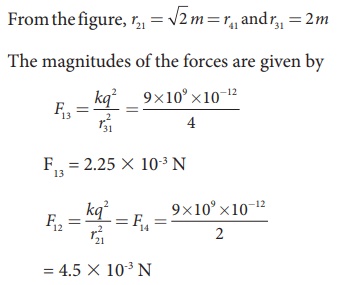
From the figure, the angle θ = 45º. In terms of the components, we have
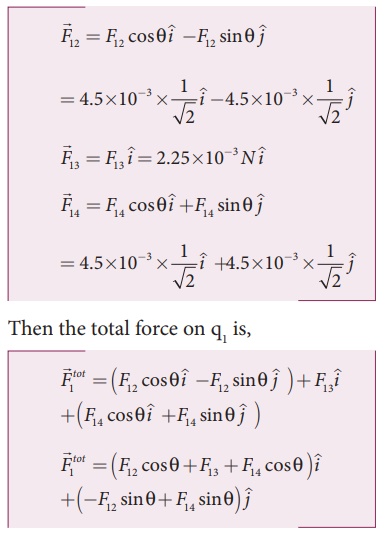
Since F12 = F14, the jth component is zero.
Hence we have

substituting the values in the above equation,
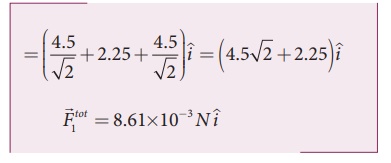
The resultant force is along the positive x axis.
Related Topics